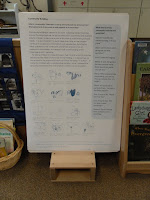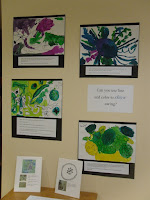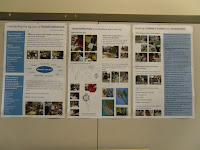"Nurturing Habits of Heart and Mind"
DAY TWO
DAY TWO
Another round of inspiring speakers, including further thoughts on the purpose of documentation. Especially resonant were the comments of Patricia Hunter McGrath, a well-known atelierista in the Reggio community. She spoke of documentation "as a way of listening to children that projects their voices to the whole world", and of artistic materials as "the text of early childhood education". What would happen, she demanded, if we designed a school for listening? What would it look like? What would it sounds like? I enjoyed the exercise of imagining such a school in my mind ...
For now, though, we can look to what other folks are doing. To keep moving with this idea of documentation, I continued to document, myself, the different kinds of documentation I found at Opal.
For now, though, we can look to what other folks are doing. To keep moving with this idea of documentation, I continued to document, myself, the different kinds of documentation I found at Opal.

This is a poster on Community Building in the preschool classroom. Beneath the title at the top, it begins with the questions of the theme: What is a community? What does a strong community look like and sound like? What agreements would you like to make for our community?
A description follows of how teachers spoke with children and invited their voices (in the language of several artistic media) into conversation about community. The blue panel on the right features the transcription from a conversation with the kids. Below, there is some of their artwork, as well.
In the K-1 classroom, a big theme that emerged this year was caring. Below are several documentations of the class' on-going learning process and experiences around that topic.

What does caring look like? Students created individual artistic representations, then worked together to create the collaborative mural below:

Here, the site of growing tadpoles. Questions anticipate their coming transformation: "What will the frogs be looking for in their new habitat? What will they need to survive?" Learning to care for other living creatures sometimes helps us think about caring for our own kind ...

How do we design a classroom, a school, a community, that values this kind of listening?

This afternoon's talk on the foundational principles of Reggio Emilia helped me with this question, as I began to think of ...
- Child as protagonist
- Child as collaborator
- Child as communicator
- Teacher as partner, nurturer, guide
- Teacher as researcher, engaging children as researchers
- Environment as teacher
- Parent as partner in education
- Documentation as communication
- Organization as foundational
Such fascinating questions to be ruminating on, such food for thought, and for the passion I have for this work ...

 2010 Summer Symposium
2010 Summer Symposium
No comments:
Post a Comment